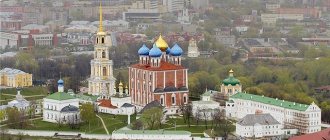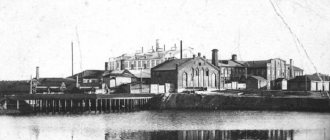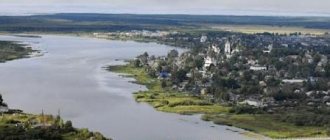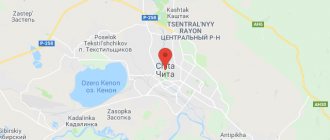Relaxing by the water continues to be the most popular holiday choice. At the same time, tours with fishing and kayaking are becoming increasingly popular, fortunately, Russian reservoirs allow this. For experienced tourists who have experience of going down rivers of various levels of difficulty, little-explored places are the most attractive.
These include the Zhizdra, a river in the Kaluga region. But not only experienced tourists will enjoy relaxing on its shores and waters. Beginners, both rafters and fishermen, will have a lot to learn, be surprised and enjoy here.
Description of Zhizdra
The Zhizdra River has a length of 223 km, and along the entire route it “wiggles” and turns every now and then. This left tributary of the Oka is most popular among those who prefer direct communication with nature, without the intermediary services of tourist centers and holiday homes.
The Zhizdra River (Kaluga region) originates in a small swamp near the town of Lyudinovo, then crosses part of the Central Russian Upland and flows into the Oka near Przemysl. Although this is a small river by Russian standards, it is nevertheless fed by 129 tributaries, one of which is the Resseta, a favorite place for kayakers and raft owners.
Holidays on the Zhizdra River are mainly tented, so the impression of it often depends on the shore.
The most picturesque and convenient places for leisure activities begin behind Kozelsk, the largest settlement in this area.
If you go on a trip along this river, you should know about the customs of local fishermen and take them into account. In a fairly large area, they put dams for fishing, so you should be extremely careful and not raft at night. Experienced rafters dismantle part of the obstacle to continue the journey.
The city of Zhizdra is the administrative center of the Zhizdra district of the Kaluga region. Located in the south of the Kaluga region, bordering the Bryansk region, on the Zhizdra , 180 km from Kaluga, approximately 300 km southwest of Moscow.
Currently the city has a population of 6 thousand
Zhizdra is an ancient Russian city. It differs from other cities in its layout, straight streets and alleys, and flat terrain. The Zhizdra River flows through the city center. This is a quiet, cozy provincial town.
There are several versions of the origin of the name. The Lithuanian Golyad tribe lived in the Kaluga region for a long time. Therefore, many names of rivers and settlements are of Lithuanian origin. There is another legend: soldiers called to each other from one bank to the other in the morning, asked ALIVE, answered HEALTHY. In the morning dawn one could hear “Hey...” A guard regiment of soldiers stood on the Zhizdra serf line under Ivan the Terrible, when he, by his decree, sent Prince Serebryany to the Zhizdra post. There is another version of the legend with a roll call of boatmen on different banks of the river.
In the 12th century, cities began to form in the Kaluga region. The first mention of Zhizdra dates back to 1146: “From the beginning of the village. The village of Zhizdra under the building had 6 courtyards with a settlement of 9 men and 8 women. There were 6 acres of land under the estate.”
In 1382, 2 years after the Russian victory on the Kulikovo Field, the Tatar Khan Takhtamysh raided Moscow. Residents of the Moscow region fled from the fierce Tatars. A crowd of Russian people, led by a priest, moved to the southwest. They walked for a long time through dense forests. They went out to the river. Its left bank was sandy, the river was not wide, but full-flowing; a small river flowed from the south near a pine forest and flowed into the river. The travelers crossed the river on rafts. They decided that they would stop here. The forest and river will feed and protect. And in order to legitimize a new place of settlement, it is necessary to cut down a one-day church. At sunset, a wooden cross was placed on the church. A falcon sat on the cross. “A sign of God!” – the refugees spoke. And the settlement was called “Sokolye”. Such is the legend. This church was wooden, it was located on the outskirts of the current bakery on the north side and was called Sergievskaya.
System of defensive fortifications of the southern approaches to Moscow in the 16th - early 17th centuries. through the Kaluga province it stretched from the village of Zhizdra in a north-eastern direction to Przemysl, from it to the east - the Likhvinskaya zaseka. In 1530-1584 during the reign of Ivan the Terrible - the Tula serif line. Guard posts began to appear on the serif lines. Food, equipment, and clothing were delivered there. The village of Zhizdra may have grown on the site of such a guard post.
Catherine II was published . The decree was brief: “On October 17, 1777, to the Government Senate on the renaming of the village of Zhizdra - a district town of the Kaluga province.
The city of Zhizdra became the center of the county, which included most of what is now the Ulyanovsk district, Khvastovichesky, Duminicheskiy, Zhizdrinsky, Lyudinovsky, Kirovsky, part of the Kuibyshevsky district, the village of Betlitsa and part of the Dyatkovsky district of the Bryansk region.
The population of the county was 240,347 people.
In the first decades after being granted city status, Zhizdra developed slowly. In 1786, there were state houses, for the placement of judicial places 5; philistine 191; 115 of them are on a stone foundation. “Residents...: clergy... 19 men, 23 women; merchants and philistines... who signed up... 929 males, 900 females.
In 1836-1837, the Tarutinsky regiment was stationed in Zhizdra on the Old Town. The poet Alexander Ivanovich Polezhaev, who was demoted to the ranks of soldiers, served in the Tarutinsky regiment in the Zhizdrinsky district.
1847-1849 in Zhizdra there are: district and zemstvo courts, city magistrate, city council, medical board, treasurers, district chiefs, intermediaries for land delimitation, district solicitors, land surveyor, wine and salt bailiffs.
1860 - 9956 inhabitants, of which: women - 4916, men - 5040, merchants - 606, burghers - 8495, some of whom were engaged in petty trade and crafts, and some in arable farming and gardening. There are 296 artisans in Zhizdra, of which 126 are masters. The territory of the city is 2419 acres. There were a lot of merchants.
In 1877 it was a small county town and a significant trading center. In 1880 there were 42 trading shops.
1890 The area of the city is 3 square meters. versts, 35 streets and 57 alleys, 1190 residential buildings, 72 stone.
In the 19th century, a linden city garden was laid out on the left bank of the river, and also, by order of police officer Simberg, a square was planted from the Mariinsky Gymnasium to the Kazan Church.
At the end of the 19th century, the Moscow-Kiev-Voronezh railway was built. It was designed through Zhizdra . The landowner Kanshin bribed the designers to build it 12 km. from the city through the village of Zikeevo, where he had a sawmill. The city government, using its own funds and funds collected from wealthy merchants, managed to build a railway line from Zikeev to Zhizdra .
In 1905, the city had: 2 brick factories, 1 soap factory, 1 sawmill, two mills, 2 matting factories, a total of 120 workers. In Zhizdra, on the river, where the dam is now, there was a city water mill with a grist mill. In Koszatin (eastern part of the city) there was a Kanshin convoy factory.
In the 10s of the 20th century, the Yasenevy - Stolypinsky square appeared (opposite housing school No. 1).
Zhizdra was the administrative, trade and cultural center of a large district of the Kaluga province. At that time, more than ten thousand people lived Zhizdra The city was distinguished by its correct layout. Initially it was located on the right bank of the Zhizdra . Then it spread to the left bank.
In the most prominent place stood the Alexander Nevsky Cathedral (built in 1777-1781, blown up by the retreating Germans in August 1943). In total, there were five Orthodox churches in the county town.
In 1930, the districts were liquidated, Zhizdra entered the Western region with its center in Smolensk.
On October 3, 1941, reconnaissance from the German army came to Zhizdra , and on October 5, the main units of the invaders entered. The soldiers settled in their homes and looked for hay for the horses. The occupation began.
From February to August 1943, fierce battles took place on the approaches to the city. The liberation of Zhizdra began on the night of August 16, 1943. In the Pravda newspaper dated August 19, 1943, military correspondent P. Lidov wrote: “I cannot say that I visited Zhizdra , because Zhizdra does not exist. The Germans destroyed it within two weeks, methodically, according to a pre-developed plan. They burned the city quarter by quarter, from one end to the other.
In 1983, on the 40th anniversary of the liberation of the city from the German occupiers, a memorial to the liberating soldiers was opened.
In the 50s, individual construction was carried out at a rapid pace. The city is being restored according to the pre-war plan. The borders expanded, new streets appeared. PMK-2 was headed by V.Ya. Lepekhin. In 1951, all residents left the dugouts.
Later, a dairy factory (1964), a cafe-restaurant (1970), a department store (1976), and a hotel (1984) were built.
During the period 1959-60. under the forestry enterprise in Zhizdra , an arboretum was established, with the goal of not only more fully collecting and growing tree and shrub species, common and rarer, but also observing and describing growth and development; features of the collected trees and shrubs, as well as create a beautiful place for recreation and excursions.
Until the end of the 70s, the arboretum really served its purpose, but over time it was abandoned.
In the pre-war years, there was a gardening school in Zhizdra . At the end of the 19th century, gardeners from the Far East Kryukov and Schneider came to the city to teach. In three years, from 1898 to 1901, they founded an arboretum next to the school with an area of about two hectares, intended for educational purposes.
Today there is a forest arboretum of Zhizdra . It rightfully bears the name of its founder V.G. Blagorazumov (1 hectares).
There are also other specially protected areas in the city:
— Spruce-broadleaf forest , 149 hectares, Botanical
— “Rubtsovsky Key” , Vodny
— “Budyanovsky Key” , Vodny
— Old Town Park , 5 hectares, Landscape
There is the Church of the Intercession of the Blessed Virgin Mary (1992-94)
Telephone code: +7 48445 City website: www.zhizdra.ru
Climate
The climate of the Kaluga region is conducive to both summer recreation on the water and winter fishing. There is a clearly defined change of seasons here. Summers are moderately hot and humid, and winters are moderately cold with persistent snow cover and an average temperature of -9 degrees below zero.
All this contributes to the Zhizdra (river) becoming an object of interest for travel agencies working with weekend programs. Statistics show that today such tours are the most popular among Russians. The Kaluga region is not far behind in this regard.
The absence of sweltering heat, protected areas, reservoirs with clean water, holy springs - all this attracts lovers of pristine nature to the Zhizdra River.
It is important to remember: in terms of the amount of precipitation, this region belongs to the area of sufficient moisture, so raincoats and waterproof tents are necessary equipment for traveling along the river.
Zhizdra
(Kaluga region)
OKATO code:
29212501
Founded: City since:
1777 City of district subordination (Zhizdra district, Kaluga region)
Center:
Zhizdra district
Telephone code (reference phone)
| 48445***** | 21-7-50 |
Deviation from Moscow time, hours:
0
Geographic latitude:
53°45′
Geographic longitude:
34°44′
Altitude above sea level, meters:
180 Sunrise and sunset times in the city of Zhizdra
Holy places
The Zhizdra River became a refuge for the stauropegial monastery of Vvedenskaya Optina Pustyn. According to legend, it was founded at the end of the 14th century by Optius, a robber who repented of his crimes. After his tonsure, Optius received the name Macarius, and the monastery built by him and his fellow monks began to serve as a haven not only for pilgrims, but also for elders and elders who had taken monastic vows.
The monastery was first mentioned in chronicles during the time of Boris Godunov; over the years, it turned from a small wooden monastery into a strong fortress with walls and stone cathedrals and churches.
Those who are attracted to the Zhizdra River as a vacation spot are recommended to visit these ancient walls, touch their history and draw water from the holy spring, since the monastery is located on the very bank. The beautiful architecture and special atmosphere of this place will remain in the memories of rafting on this river for a long time.
A weekend on Zhizdra is a small life!
Heavy rain, wind and temperatures below 10°C in the forecast for the weekend are not a reason to stay home. After all, if you have a backpack behind you, this is a 100% opportunity to see and feel something new.
It was in pursuit of emotions that I left work an hour early on Friday, April 30, got on the bus and went for the night to the Kaluga region to the Zhizdra River.
There are 18 people on the bus, some of them are friends from the Breeze tourist club; we get to know the rest while we’re driving.
The adventures began already on the road. Somewhere between Tula and Kaluga we were hit by torrential rain. I sadly remember that my raincoat is in the middle of my backpack. Well, well, it’s pouring - and let it be... We arrived at the place in complete darkness. I’ve never set up a tent so quickly: either go for a record, or sleep in a puddle. We covered the tent with foil, threw all our things inside and went under the general awning. And there the fire is already burning, and the water is heating in the pots - soon there will be dinner. You warmed your hands with tea, you can take your guitar.
We saw the place of the first night only in the morning: a clearing on the edge of a pine forest, there is a long wooden table, above it there is a frame for stretching an awning.
To the right of the parking lot are two wooden toilets. National park after all! But the connection is not very good. Some operators have zero network, while others have enough for a call. But we didn’t come to scroll through social networks. Those who had a network shared it with their comrades.
Our route ran through the Ugra National Park, so the authors of our mini-trip informed us about the arrival of the tour group in advance. It’s not difficult: fill out the form on the park’s website, pay 150 rubles per person and you’re done.
The weather changed this morning. The sun began to peek through. While breakfast is being prepared, we assemble the catamarans, dismantle the tents, put everything in hermetic bags and take it to the river.
The clearing and the bank are separated by a stream. Perhaps in dry weather it is small, but now it is two meters wide and knee-deep. There is a highway and a bridge over the Zhizdra nearby, so the girls and I decided that we would still have time to get rid of it up to our ears. Having handed over the things to the guys, we went around, then boarded the catamarans and sailed away.
Zhizdra is picturesque. There is not much greenery yet, but the sandy shores and trees covered with young foliage are charming. There are many fishermen and tents along the banks.
The water easily carries the catamarans; you don’t have to work too hard with the oars, but just enjoy the scenery while “waltzing” on the water.
You just need to paddle a little around the turns, and drink tea, tell or listen to stories about hikes, discuss preparations for upcoming trips.
So we sailed about 20 km, we planned to set up camp near the Otrada farm, but a little earlier we saw a beautiful parking lot.
They called it “Karelian” because of the “walking” pines - the sand is blown by the wind and washed away by the rains, exposing the roots - it seems that the tree seems to have frozen in its step. There is an equipped parking area on the shore: benches, a table, a fire pit.
We set up camp before dark. By that time, the water in the river had changed color from brown to sunset - golden blue...
The boys got wood and started a fire while the girls peeled potatoes for soup. Cook with what? On water from the river - what else? Soon everyone is full. The guitar is just gone - the string has broken. The day was busy, so we didn’t stay long and went to rest. The night turned out to be partly cloudy, and we had time to admire the stars.
On the morning of the second day the sky became cloudy. In general, we could have stayed for a “day” and walked the rest of the way tomorrow, but we still decided to swim to Otrada. We wash the dishes, burn everything that burns from the garbage, collect the rest and send it to the catamarans. Let's hit the road!
While we are loading, it starts to rain lightly. It accompanies us all the way, but by the time we reach the pier it stops and we unload. Some will say: loading and unloading is tedious. Yes, it was possible to swim the entire route in a day, but you won’t see the beauty of the forest that way.
The third parking lot greets you with a tall spruce forest and pine trees mixed with larches. A forest stream runs between them towards Zhizdra. The murmur of the stream and the quiet singing of birds enchant.
It seems that there is nothing better than just being here and now. And the center of happiness is here – in this very patch of forest.
We pulled up the awning, prepared dinner, and again it was raining like buckets. But the string was returned to the guitar, why not sing by the fire?
The rain stopped only in the morning, and yesterday's clear stream turned into a raging river.
All these are trifles, because the sun began to peek through. The only pity is that we will be home in the evening. But there is still a journey ahead by water to the village of Berezichi.
In Berezichi we were met by four young Cossack girls. They greeted us and showed us where the firewood was, if needed. Nice!
When we entered Tula, we realized that the adventure on Zhizdra was over and we would have to return to civilization. But for the sake of emotional upheavals and strong impressions, it’s worth going on weekend tours.
Settlements
The Zhizdra River owes its name to the Lithuanian Golyad tribe, who once lived on its banks. Translated from their language, it means “coarse sand,” which is true, although there is another legend about this name, which is unusual for Russian ears. They say that the words “alive” and “healthy” were used by boatmen from different banks of the river when greeting each other in the morning.
These places cannot be called densely populated: there are only a few cities here, the largest of which are Zhizdra (the river divides it in half) and Kozelsk. These are truly provincial towns that have preserved the leisurely passage of time characteristic of settlements of the 17th-19th centuries.
There are not so many villages and settlements directly facing the river, so it is better for rafters to stock up on food and everything they need in advance. But such a vacation can really be called “wild,” since there are no sounds of transport or noise typical of city life. Only birds, the rustling of trees and the splash of fish in the water.
Features of the natural world
Since the Zhizdra (river) does not flow near large industrial centers, the pristine nature is perfectly preserved here. It is here that the famous Kaluzhskaya Zaseka nature reserve is located, thanks to which oak trees aged 250 years and older were preserved.
The ancient oak forest is home to more than 50 species of mammals, about 170 species of birds, 5 species of reptiles, about 10 species of amphibians, and the river is home to 16 species of fish.
This protected park is also considered historical, since, in addition to the fact that its territory is 65% covered with forests and ponds, it has 20 natural monuments, 4 of which are unique.
Part of the reserve along Zhizdra are oxbow lakes - the main attraction of these places. The now rare Russian muskrat lives on their banks.
Fishing
Clean water is another feature that the Zhizdra River has. Fishing here is a real pleasure, but it is important to know exactly where the fish are. The best place is considered to be the part of the reservoir starting behind Kozelsk. In addition to the river itself, its tributaries, especially Peschany, Yasenok, Bryn and Resseta, are very popular among fishermen.
In Zhizdra itself you can catch chub, pike, perch, ide, dace, asp and other fish. The sandy shores are conducive to long-term parking, and the pine-oak-linden forest growing on them will become a source of firewood and berries. Particularly popular among fishermen is pike fishing, which is known to be the most intelligent and cunning fish. The only condition for successful fishing is maintaining silence, since for many kilometers here you can only hear birds and the sound of the river.
Kayaking
Rafting on the Zhizdra River in the Kaluga region can be carried out both on kayaks and on homemade rafts. Most of the river is quite calm, but winding. The most popular area is in front of the village of Chernysheno. Here rapid rapids appear, and the river narrows to 20 m.
Tour operators working with river rafting programs have long chosen Zhizdra. Typically they offer weekend tours during which:
- the first day is travel to the rafting site to the village of Dretovo, where a tent camp is set up and a late dinner is prepared;
- second day - getting ready immediately after breakfast and starting the rafting with a stop for lunch on one of the gentle banks with further swimming to a place where it is convenient to set up camp for dinner and overnight;
- third day - after breakfast, the next stage of rafting to the village of Berezichi, where lunch and collecting things take place in the field.
The Zhizdra River offers guests such an eventful holiday. The rafting is carried out with an instructor, and even beginners can easily overcome 20 km of route per day. The cost of such a vacation is low, but the impressions of beautiful nature, daily fishing and swimming in clean water will last a long time.
Quite often you can find rafters on homemade rafts who prefer not to depend on deadlines and instructions.
Map
| Zhizdra: maps |
Zhizdra: photo from space (Google Maps) Zhizdra: photo from space (Microsoft Virtual Earth)
| Zhizdra. Nearest cities. Distances in km. on the map (in brackets along roads) + direction. Using the hyperlink in the distance , you can get the route (information courtesy of the AutoTransInfo website) | |||
| 1 | Lyudinovo | 22 (26) | NW |
| 2 | Dyatkovo | 31 (60) | SW |
| 3 | Duminichi | 32 (46) | NE |
| 4 | Lyubohna (Bryansk region) | 35 (70) | SW |
| 5 | Ivot (Bryansk region) | 36 (72) | Z |
| 6 | Khvastovichi | 39 (53) | SE |
| 7 | Fokino | 39 (87) | SW |
| 8 | Kirov | 46 (56) | NW |
| 9 | Ulyanovo | 53 (144) | IN |
| 10 | Sukhinichi | 56 (64) | NE |
| 11 | Bolshoye Polpino (Bryansk region) | 58 () | YU |
| 12 | Seltso | 59 (126) | SW |
| 13 | Betliza | 59 (91) | NW |
| 14 | Belye Berega (Bryansk region) | 60 (78) | YU |
| 15 | Bryansk | 60 (90) | SW |
| 16 | Baryatino | 63 (91) | WITH |
| 17 | Rzhanitsa (Bryansk region) | 64 (139) | SW |
| 18 | Glinishchevo (Bryansk region) | 65 () | SW |
| 19 | Suponevo (Bryansk region) | 66 () | SW |
| 20 | Zhukovka | 70 (120) | Z |
| 21 | Meshchovsk | 72 (84) | NE |
| 22 | Karachev | 72 (97) | YU |
| 23 | Kozelsk | 75 (96) | NE |
| 24 | Rognedino (Bryansk region) | 77 (177) | Z |
| 25 | Dubrovka (Bryansk region) | 80 (163) | Z |
| 26 | Znamenskoye (Oryol region) | 81 (166) | SE |
| 27 | Khotynets (Oryol region) | 82 (136) | SE |
| 28 | Mosalsk | 83 (115) | WITH |
| 29 | Vygonichi (Bryansk region) | 85 (115) | SW |
| 30 | Spas-Demensk | 87 (105) | NW |
| 31 | Sosensky | 87 (111) | IN |
a brief description of
The city is located on the river. Zhizdra (tributary of the Oka), 10 km from the railway. Zikeevo station, 180 km southwest of Kaluga.
Territory (sq. km): 18
Information about the city of Zhizdra on the Russian Wikipedia site
Historical sketch
The village of Zhizdra in 1777 was transformed into a district town of the Kaluga governorate (since 1796 - Kaluga province). Name by location on the river. Zhizdra. Hydronym of Baltic origin: zhizdras “coarse sand, gravel.”
In the 18th-19th centuries. timber trade center. The Maltsov factories (named after the owner of the forest areas, I.A. Maltsov, adjacent to the city from the north-west) played a great role in the development of Zhizdra. Near Zhizdra, deposits of iron ore, coal and refractory clay were developed.
In 1856, in the district town of Zhizdra, Kaluga province, there were 3 churches, 1197 houses, 37 shops.
During the Great Patriotic War of 1941-45, it was occupied by Nazi troops from October 5, 1941. It was liberated on August 16, 1943 by troops of the Western Front during the Oryol operation. The city was completely destroyed. It was rebuilt mainly with wooden one-story houses.
Economy
Woodworking enterprises, dairy plant. Branch of the Moscow leather goods factory.
Culture, science, education
Museum of Local Lore.
Museums, galleries, exhibition halls
Zhizdra District Museum of History and Local Lore 249340, Kaluga region, Zhizdra district, Zhizdra, pl. Eliseeva, 1
| Population by year (thousands of inhabitants) | |||||||
| 1856 | 10.9 | 1979 | 5.5 | 2005 | 5.7 | 2014 | 5.4 |
| 1897 | 6.0 | 1989 | 5.4 | 2006 | 5.7 | 2015 | 5.5 |
| 1913 | 6.5 | 1992 | 5.5 | 2007 | 5.8 | 2016 | 5.5 |
| 1926 | 6.6 | 1996 | 6.0 | 2008 | 5.9 | 2017 | 5.5 |
| 1931 | 10.0 | 1998 | 6.1 | 2010 | 6.0 | 2018 | 5.5 |
| 1939 | 8.1 | 2000 | 6.1 | 2011 | 5.6 | 2019 | 5.4 |
| 1959 | 5.1 | 2001 | 6.0 | 2012 | 5.5 | 2020 | 5.4 |
| 1970 | 5.8 | 2003 | 5.7 | 2013 | 5.5 | 2021 | 5.3 |
Parking spaces
Before Kozelsk, the Zhizdra (river) is hardly suitable for recreation on the water, since it is almost impossible to choose a parking place here and you will have to sleep on a boat. The banks in this area are clayey, high and steep. Immediately outside the city they begin to gradually decrease until they turn into gently sloping beaches with clean and coarse sand.
There are no specialized bases here where you can relax in comfort, but there are also no signs saying “parking is prohibited,” so everyone is free to choose the shore that they like best and stay on it as long as they want.
It is pleasantly encouraging that every self-respecting tourist carefully removes garbage after himself before leaving the parking lot, so there are no problems in choosing a clean place on the Zhizdra River.









